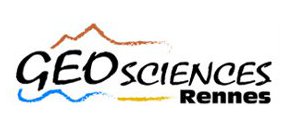Fracture, erosion and grain size within rivers
Résumé
Landscape evolution is intimately related to processes of erosion and rock fragmentation that transform the bedrock into granular material that can be transported by rivers. Among the involved processes, rock fracture seems to play a key role on the mechanisms and rates of erosion, and on the size of the produced sediments. Efforts have been focused on erosion along hillslopes, yet, as far as we know, there is no systematic study of the impact of fracture density and orientation on bedrock erosion within rivers and on the geometry of the produced grains. This is partly due to the characteristic timescales of the processes at stake (abrasion and plucking) that strongly limit direct field observations.
To address this question, we develop an experimental setup designed to simulate the erosion of a fractured bedrock within a river. The setup is made up of an annular plexiglas cylinder, at the bottom of which is placed a fractured concrete disk. The fracture network is designed numerically and then printed in 3D in PolyVinyl Alcohol (PVA), a thermo-plastic that softens when in contact with water. Water and granite sediments are added on the top of the disk, and a motor-driven propeller circulates the water and the sediments so that erosion can proceed. A set of cameras is used to reconstruct the topography by Structure From Motion so that the erosion dynamics is recorded quantitatively and at high-frequency.
The first set of experiments explore the role of fracture spacing and azimut. The preliminary results suggest that for a given lithology, the relationship between fracture density and sediment size controls the dominant mode of erosion (abrasion vs plucking). We also observe a clear relationship between the fracture spacing and the size of the concrete clasts produced by plucking. We are currently running additional experiments with different fracture orientation and we also explore the role of the granite sediment size. Based on these experimental results, our objective is to build and validate a conceptual model of erosion and landscape evolution that integrates the role of bedrock fracture within rivers.



